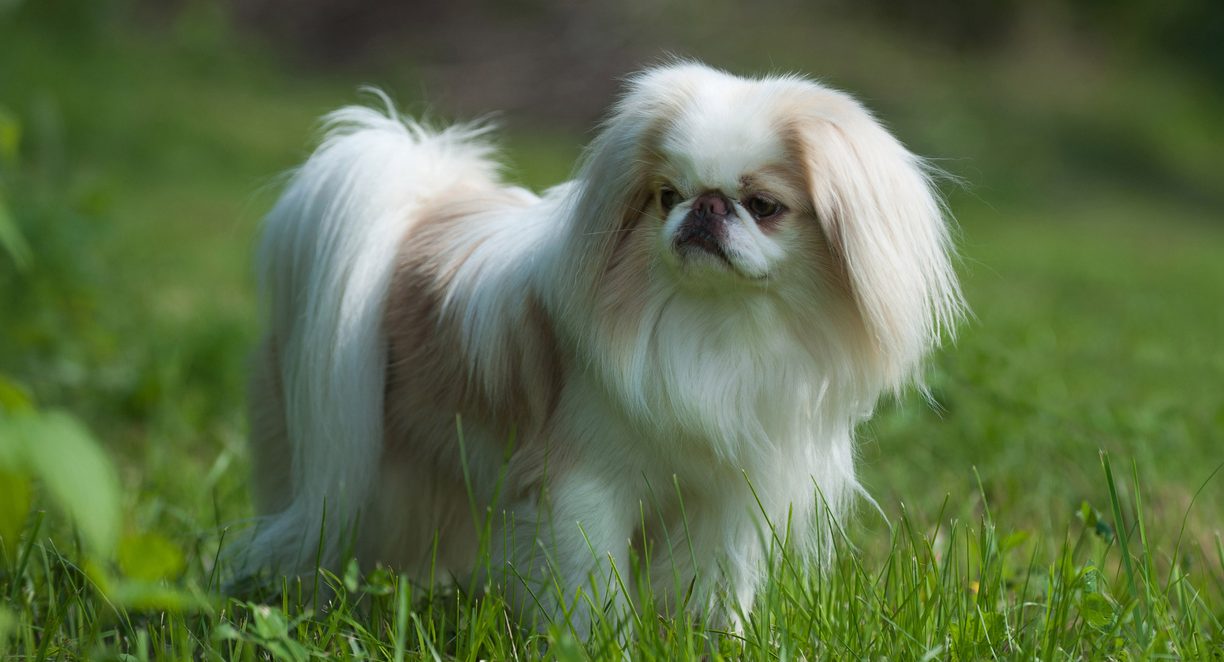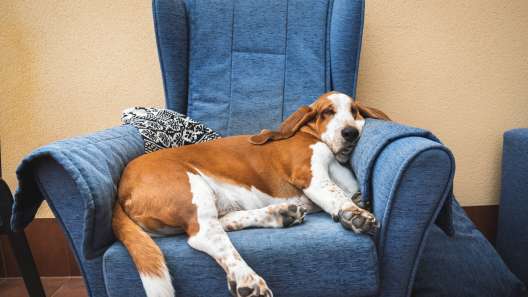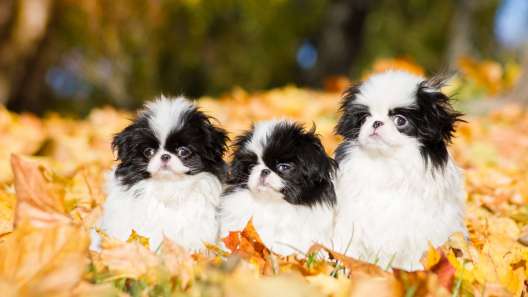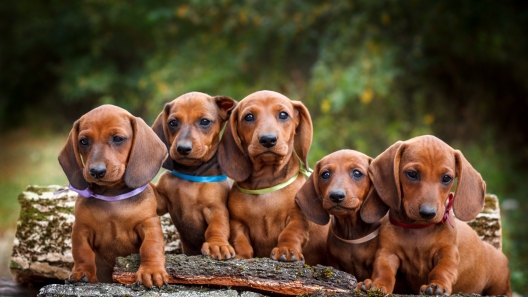-
Activity Level:
moderate
-
Shedding Level:
moderate
-
Grooming Level:
moderate
-
Trainability:
moderate
-
Good for Novice Owners:
moderate
-
Adaptability:
high
-
Kid/Pet Friendly:
often
-
Prey Drive:
low
-
Watchdog:
aware
- Average Size: Small
- Average Lifespan: 10-12 years
- Registered?: aca, akc
Japanese Chin Dog Breed Information
Overview
Temperament
Adaptability
Health
Owner Experience
Grooming
Activity Level
Size
Life Span
Did You Know?
The Japanese Chin is a dog breed with a mysterious past. What is known is that the Chin was introduced to Japan somewhere between 500-1,000 years ago. One of the facts about the Japanese Chin is that what is unknown is how the dog breed came to Japan in the first place.
Some historians claim, and maintain, that the Japanese Chin was a product of China while others claim, and maintain, that their early origins lay in Korea. Buddhist monks, European merchants, Chinese emperors, and more have all been credited with bringing the Chin to Japan in one story or another. Regardless of how the Japanese Chin first got into Japan, Japanese nobles are credited with developing the Japanese Chin into the beloved modern dog breed we know today.
Although the Japanese Chin is an older dog breed, they did not come to the United States until 1854 due to Japan’s previous isolationism. Once the country reopened for trade, the Japanese Chin began to become popular in other areas around the world. The American Kennel Club recognized the Japanese Chin in 1888 as a member of the Toy Group. At the time, this dog breed was known as the Japanese Spaniel. The name was not officially changed to Japanese Chin until 1977.
The Japanese Chin is a small dog with a charming personality and a noble demeanor. They love their families and enjoy the attention bestowed upon them. They are very much a lapdog who thrives on affection. They are often described as intelligent, charismatic, and amusing dogs. They also tend to be a quiet dog breed that moves with an aristocratic grace that belies their noble ancestry.
Well-socialized, they get along well with children, other dogs, and other pets. There are big responsibilities with owning little dogs and it’s important to be careful with them, especially when they are young. This dog breed can be easily injured by accidental falls or rough play, which can be common with younger children or children who have not yet learned how to interact appropriately with a dog.
Due to their small size, they may be a better fit for families with older children who can handle this dog with gentle hands. The Japanese Chin does not generally make a good watchdog or guard dog as they are usually open and friendly with strangers, especially once introduced, and are happy for the opportunity to gain yet another admirer.
The Japanese Chin is a highly adaptable dog breed. They do well in apartments as well as larger homes. As with any dog, they are sensitive to the heat. Due to their small size, they can also be sensitive to the cold. So, they may need to bundle up in some winter dog products when they go outside with you in the winter.
Because they are devoted to their families, Japanese Chin do not like to be left alone for long periods of time. They also should not be let off-leash unless they are in a securely fenced-in area as they are prone to wander off and your dog might not listen to you or respond to commands if they find something interesting.
Overall, the Japanese Chin is a relatively healthy dog breed, especially for a toy breed. As with any dog breed, there are some potential health conditions to be aware of. For the Japanese Chin, these potential health concerns can include canine epilepsy, cataracts, early onset heart murmurs, and patellar luxation.
There is also a neurological condition these dogs can be prone to developing called Tay-Sachs Disease or GM2 Gangliosidosis. This condition is fatal, but can be identified with a DNA test that looks for the GM2 mutation. Good breeding practices and the health of the parents make a big difference in the health of Japanese Chin puppies.
Reputable breeders will test and screen their dogs to ensure genetic mutations like this are not passed on to puppies. So, do not be afraid to ask the breeder about the genetic history of the parents and to see relevant health clearances or DNA test results. The Japanese Chin Club of America recommends a cardiac exam, a DNA test for GM2 Gangliosidosis, an ophthalmologist evaluation, and a patella evaluation.
The Japanese Chin is a moderately trainable dog breed. As a royal companion, the breed was only required to comfort and amuse their humans. With this type of royal background, this dog breed has a stubborn streak and may choose to simply not listen. It’s important to train the Japanese Chin in a way that makes them think they are doing things because they want to and not because you asked or told them to.
It’s also important to keep training methods positive and rewarding. Harshness will only damage the bond you’re building and make this dog breed shut down and ignore you. Also, Japanese Chin tend to love learning tricks as performing them tends to gain them plenty of affection and adoration. This also means they can lose interest in boring activities quickly, so it’s important to keep training sessions fun and interesting in order to keep your dog engaged during training sessions.
Although Japanese Chin can be a good fit for dog owners of any experience level, their stubborn streak can sometimes pose obstacles for a first-time dog owner who doesn’t have training experience. Puppy training and obedience classes are a great resource for any dog owner who wants to brush up on their training skills and can be a big help in navigating potential obstacles during training.
Although the Japanese Chin has a long, silky coat, they are not high-maintenance dogs. They will shed moderately year-round and may show a slight increase in shedding as the seasons change. Weekly brushing and bathing every 4-6 weeks are usually sufficient to keep a Japanese Chin’s coat looking great.
In addition to coat care, you will also need to care for your Japanese Chin’s nails, ears, and teeth. Usually, once or twice monthly nail trimming is sufficient to keep a dog’s nails from growing too long. But, this dog is known for having fast-growing nails, so you may need to cut your dog’s nails more often. If you hear their nails clicking on the floor, it’s time for a trim!
Checking your dog’s ears regularly and carefully cleaning them as needed can help prevent ear infections. When you look at their ears, you are checking to make sure they are clean, clear of debris, and that there is not an excess buildup of wax.
With dental disease being one of the most common health issues in dogs, it’s clear that good dental care is important for any dog. It’s especially important for the Japanese Chin because small dog breeds are even more prone to developing dental disease later in life than larger dog breeds.
Proper dental care for dogs can help reduce and prevent the tartar and plaque buildup that causes painful dental diseases like gum disease and tooth decay. Brushing their teeth or using an enzyme toothpaste every day, in addition to cleanings at the vet when needed, is ideal. Beyond that, you can supplement your efforts with vet-approved dental hygiene treats or even a “dental care diet”.
Although they are a toy breed and can be one of the laziest dog breeds if you let them, the Japanese Chin has a moderate activity level. Some extra activity or playtime in addition to their daily walks is generally sufficient to keep this dog breed happy and healthy.
They may be up for some more rigorous activity with you, but they will tire easily and can overdo it. So, it’s important to keep an eye on them for signs of overheating and to be prepared to carry them if needed when you’re hiking with your dog or doing a longer activity.
A fully-grown Japanese Chin usually stands 8-11 inches tall at the shoulder and weighs 7-11 pounds. This makes them one of the smallest dog breeds.
Japanese Chin generally live for 10-12 years on average.
When it comes to dog breeds in Japan, you can get an idea of their background from their name. “Inu” refers to dogs that are more common and are working dogs while “Chin” refers to dogs that were considered royal or noble companion dogs and are descendants of the lapdogs of ancient Chinese aristocracy.









